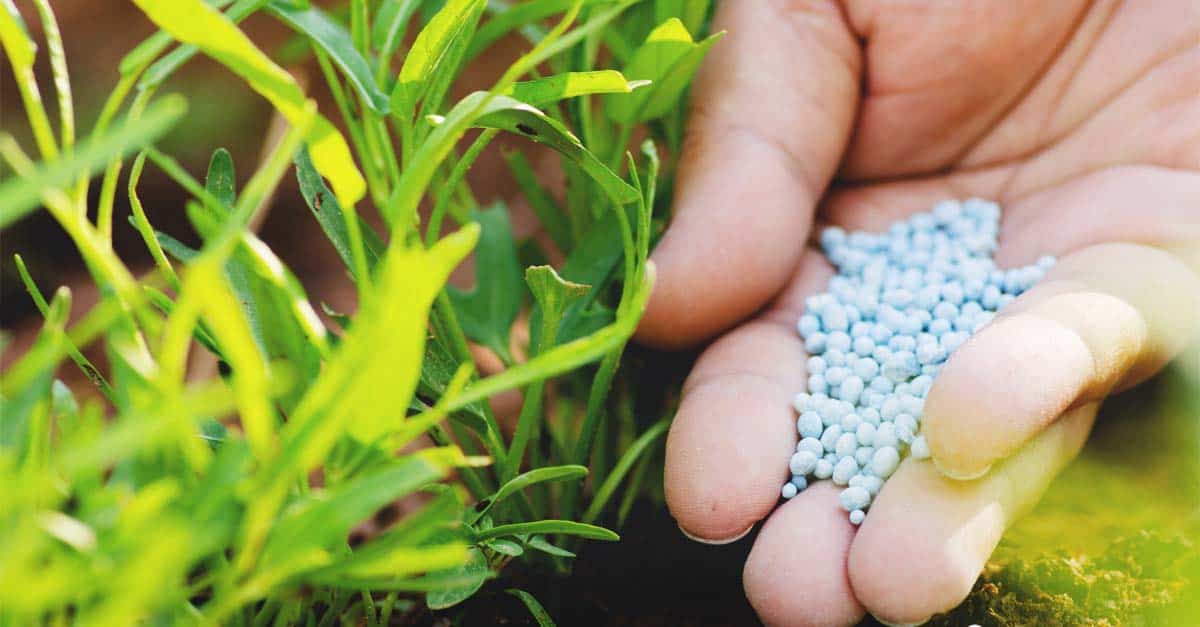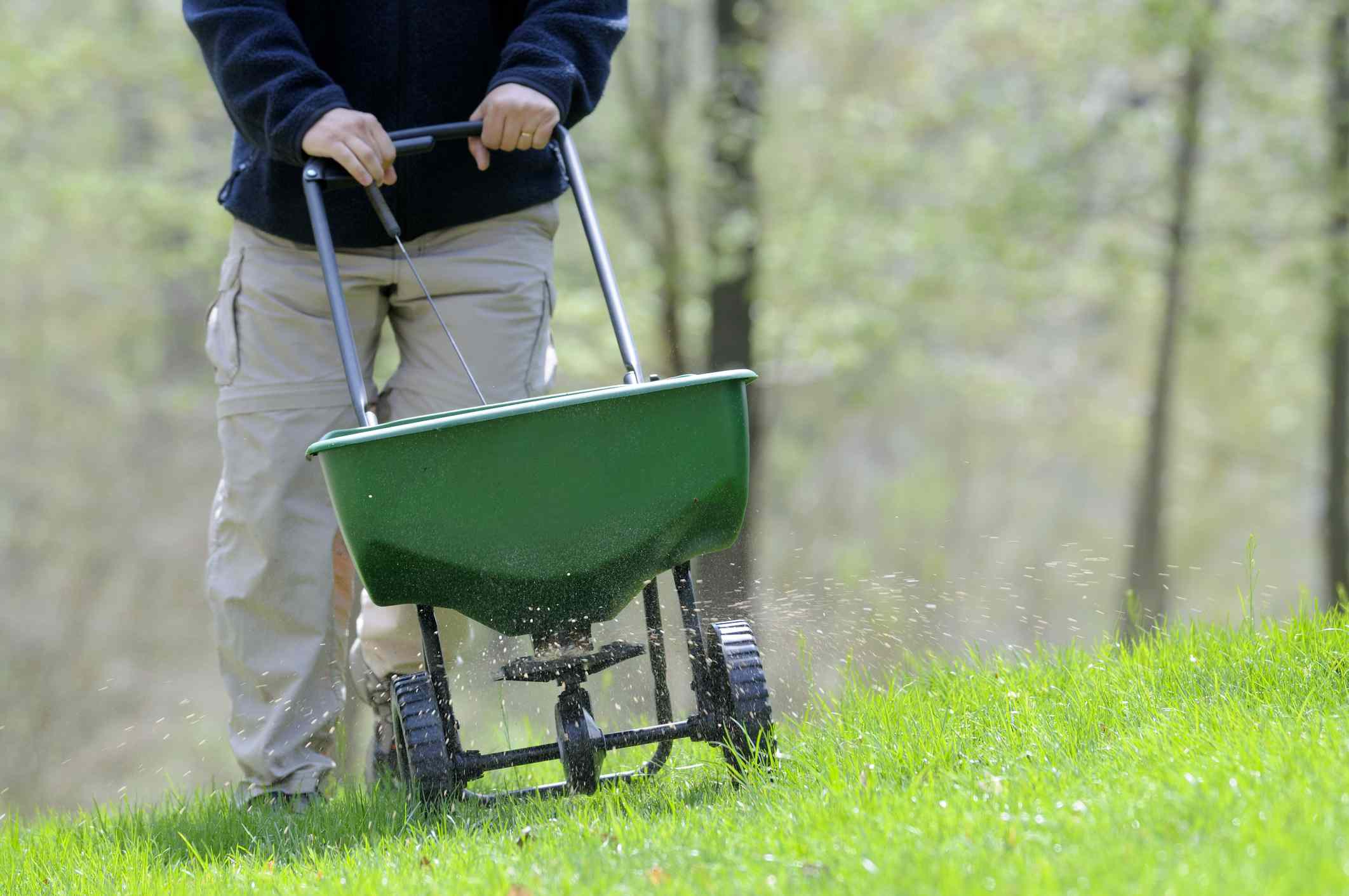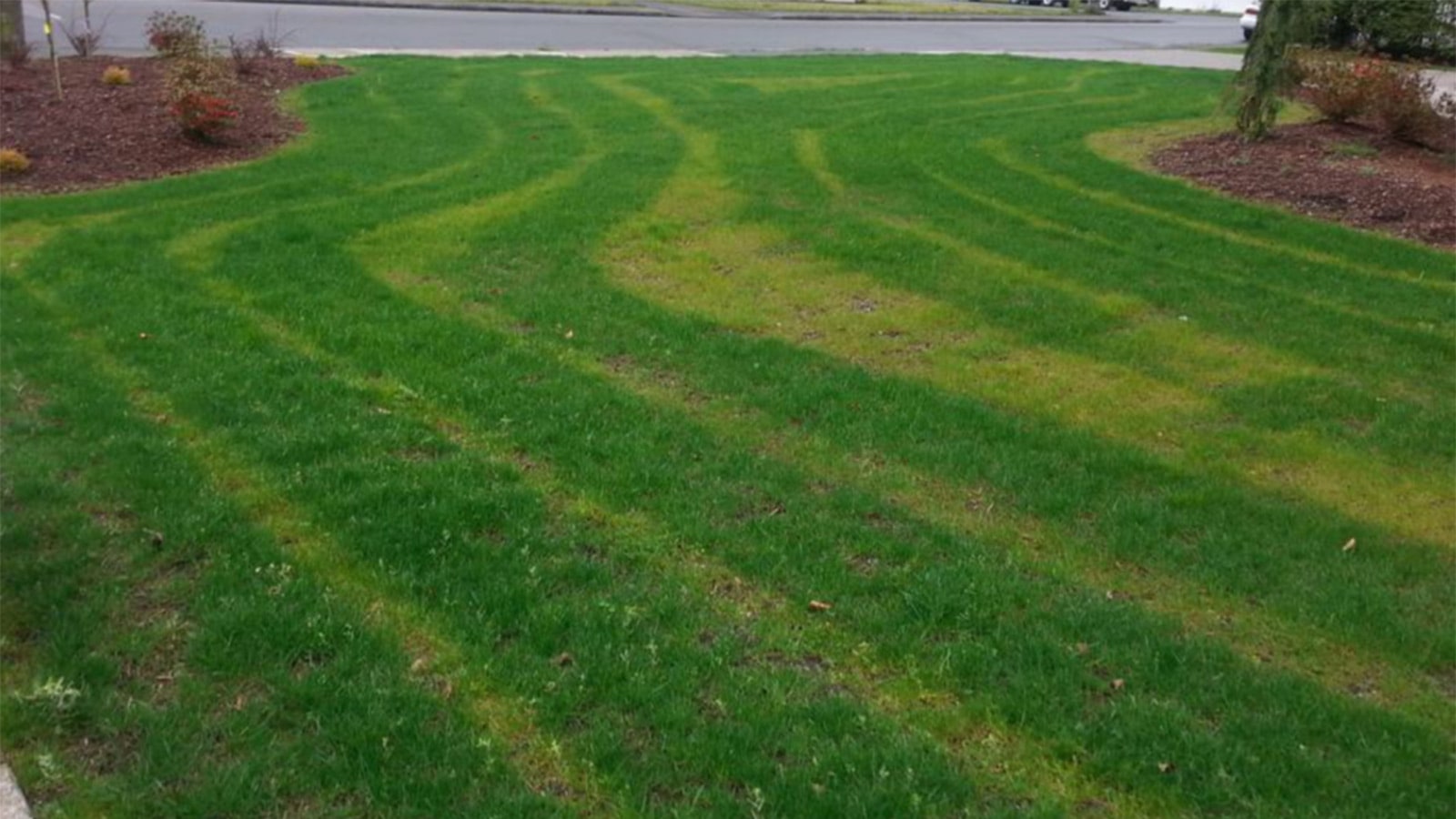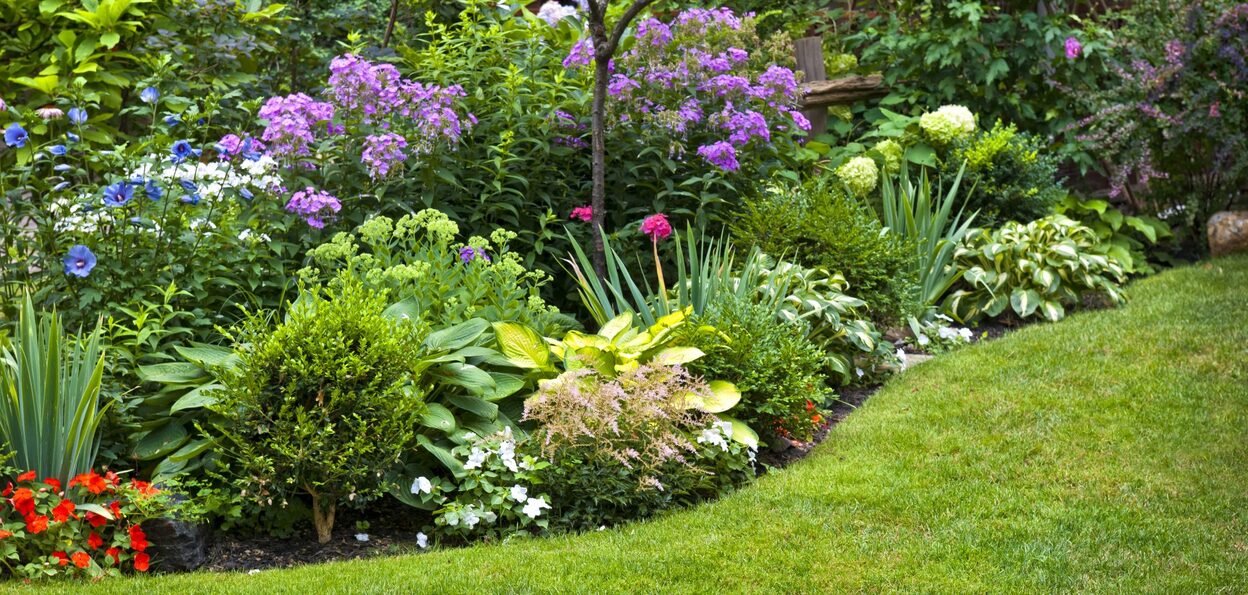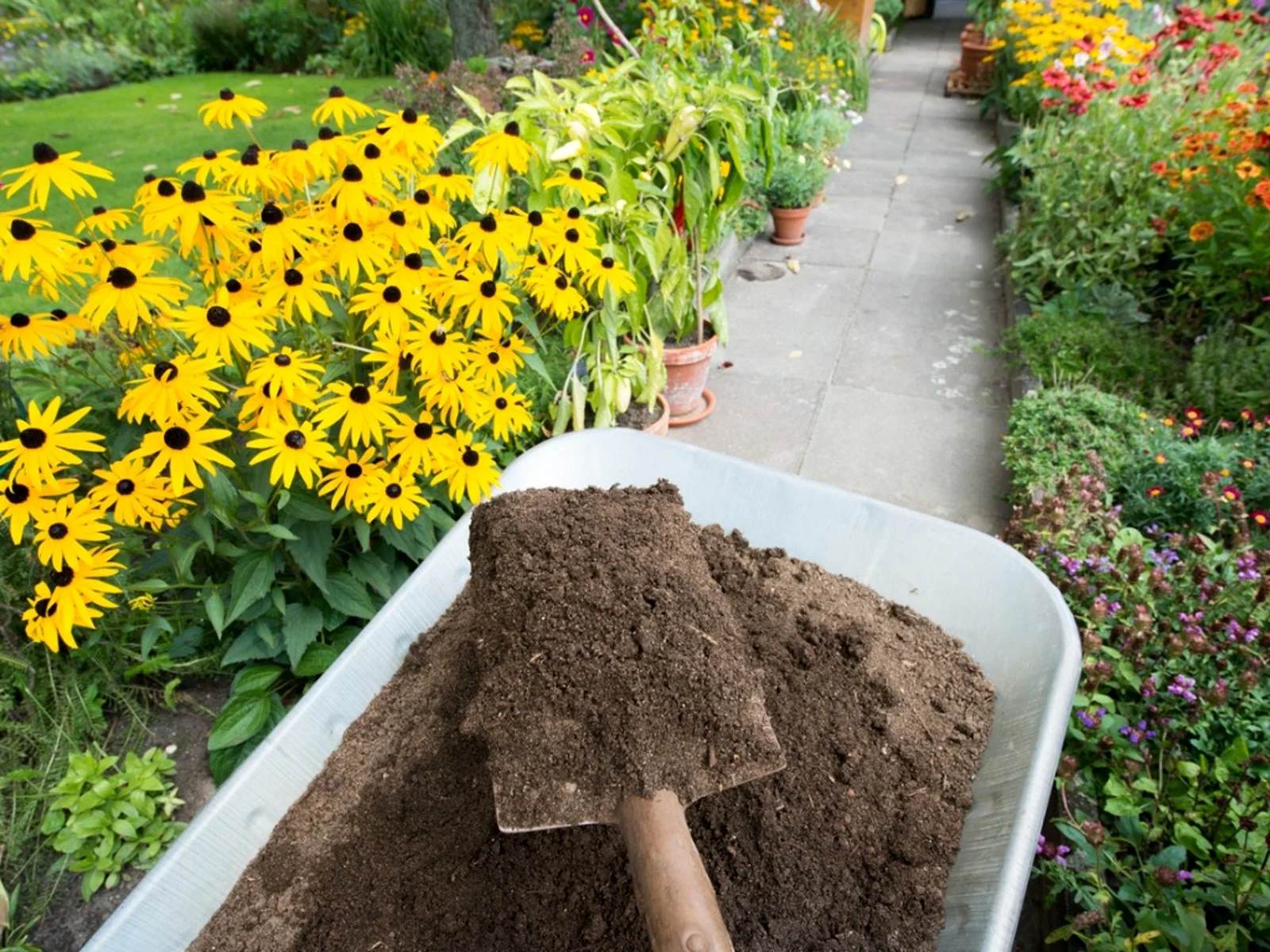Home>Gardening Tips and Tricks>When To Apply Fertilizer And Weed Killer


Gardening Tips and Tricks
When To Apply Fertilizer And Weed Killer
Published: August 5, 2023
Learn when to apply fertilizer and weed killer for effective problem solving in your garden.
(Many of the links in this article redirect to a specific reviewed product. Your purchase of these products through affiliate links helps to generate commission for Chicagolandgardening.com, at no extra cost. Learn more)
Table of Contents
Introduction
Welcome to the world of lawn care! Achieving a lush and healthy lawn requires proper maintenance, and that includes applying fertilizers and weed killers. However, knowing when to apply these products can make all the difference in achieving successful results.
Fertilizers provide essential nutrients to help your lawn grow, while weed killers help eliminate unwanted weeds. Both products are valuable tools in maintaining a beautiful and vibrant lawn. However, their effectiveness greatly depends on the timing of their application.
Timing is crucial because it directly impacts the absorption and effectiveness of fertilizers and weed killers. Applying them at the right time ensures that your lawn receives the maximum benefit and reduces the risk of harming your grass or plants.
In this article, we will explore the importance of timing in fertilizer and weed killer application. We will delve into the factors to consider before applying these products and discuss the best times to apply them. By the end, you will have a clear understanding of when and how to apply fertilizers and weed killers to achieve optimal results for your lawn.
Understanding the Importance of Timing in Fertilizer and Weed Killer Application
Timing plays a crucial role in the effectiveness of both fertilizer and weed killer applications. Applying these products at the right time ensures that they are absorbed properly, promoting optimal growth for your lawn while preventing damage or harm.
When it comes to fertilizers, timing is essential because it allows you to provide your lawn with the nutrients it needs at the right moments. Applying fertilizers too early or too late in the season may result in wasted resources or inadequate nourishment for your lawn. Conversely, applying fertilizers at the ideal time can have a significant impact on the overall health and appearance of your lawn.
Similarly, timing is crucial when it comes to applying weed killers. Weeds can quickly spread and compete with your grass for nutrients and space, leading to a patchy and unhealthy-looking lawn. By applying weed killers at the right time, you can effectively target and eliminate these unwanted plants while minimizing the risk of damaging your desirable grass.
Moreover, applying weed killers at the right time helps ensure that the active ingredients in the product are most effective. Some weed killers work best when the weeds are actively growing and vulnerable, while others are designed to target specific types of weeds during certain stages of their development. Understanding these timings can help you choose the right weed killer and maximize its effectiveness.
Timing is also influenced by external factors. Weather conditions, such as temperature and rainfall, can impact the absorption and effectiveness of both fertilizers and weed killers. Applying these products during periods of extreme heat or heavy rainfall may result in product runoff or evaporation, reducing their efficacy.
Additionally, understanding the life cycle of your lawn and weeds is essential in determining the ideal timing for application. Different grass species have varying growth patterns, and weeds have different growth stages. By being aware of these timelines, you can strategically plan and apply fertilizers and weed killers to target specific growth stages and achieve optimal results.
In the next section, we will explore the factors you need to consider before applying fertilizers and weed killers, further emphasizing the importance of proper timing for successful lawn care.
Factors to Consider Before Applying Fertilizer and Weed Killer
Before applying fertilizer and weed killer to your lawn, it is important to take several factors into consideration. These factors will help determine the best time and method for application, ensuring optimal results for your lawn care efforts.
1. Grass type: Different grass varieties have varying nutrient requirements and growth patterns. Understanding the specific type of grass in your lawn will help you choose the right fertilizer and determine the appropriate timing for application.
2. Soil conditions: Assessing the soil composition and pH levels is crucial before applying fertilizers. Soil testing can provide valuable insights into nutrient deficiencies and pH imbalances, allowing you to select the appropriate fertilizer formulation and adjust the pH levels if necessary.
3. Seasonal considerations: The time of year greatly impacts when to apply fertilizer and weed killer. Cool-season and warm-season grasses have different growth cycles, and fertilizers should be applied accordingly. It is also essential to note that weed growth varies throughout the year, and targeting weeds during their active growth stages will yield the best results.
4. Weather conditions: Weather plays a significant role in the effectiveness of fertilizer and weed killer applications. Consider the current weather conditions and the forecasted weather patterns. Extreme heat, heavy rainfall, or drought can impact the absorption and efficacy of these products.
5. Safety precautions: Take the necessary precautions to protect yourself, others, and the environment. Read the instructions and warnings on the product labels carefully. Use appropriate protective gear, such as gloves and goggles, and ensure proper storage and disposal of the products.
6. Existing lawn conditions: Assess the overall health and condition of your lawn before applying fertilizers and weed killers. Address any underlying issues like compacted soil, thatch buildup, or diseases before applying these products for optimal results.
By considering these factors before applying fertilizers and weed killers, you can make informed decisions and implement the most effective lawn care practices. In the following sections, we will delve into the best times to apply fertilizers and weed killers, taking into account these critical factors.
The Best Times to Apply Fertilizer
Timing is crucial when it comes to applying fertilizer to your lawn. The goal is to provide your grass with the nutrients it needs at the right moments to promote optimal growth and overall health. Here are the best times to apply fertilizer:
1. Early Spring: Applying fertilizer in early spring is beneficial for cool-season grasses. This is when grasses start their active growth phase after winter dormancy. It helps kickstart the lawn’s growth, providing necessary nutrients for root development and early greening.
2. Late Spring: Late spring is an ideal time to apply fertilizer to cool-season grasses. By this time, the grass has fully emerged from winter dormancy and is actively growing. Applying fertilizer at this time helps support healthy foliage growth, ensuring a lush and vibrant lawn.
3. Early Fall: For both cool-season and warm-season grasses, applying fertilizer in early fall is highly beneficial. This period promotes root growth and nutrient uptake, allowing the grass to store reserves and prepare for winter dormancy or transition into the cooler months. It also helps repair any summer damage and aids in the recovery of the lawn.
4. Late Fall: Applying a winterizing or slow-release fertilizer in late fall is crucial for cool-season grasses. This type of fertilizer provides a steady supply of nutrients during the winter months when grass growth significantly slows down. It helps strengthen the lawn’s roots, improves disease resistance, and ensures a quicker transition into spring green-up.
It is important to note that the timing may vary based on your specific location and grass type. Consulting with a local expert or extension service can provide valuable insights into the best times to fertilize in your area.
When applying fertilizer, follow the manufacturer’s instructions regarding the proper amount and method of application. Avoid excessive fertilization, as it can lead to nutrient runoff, pollution of water sources, and damage to the environment. Always water your lawn after applying fertilizer to ensure proper absorption and minimize the risk of burning the grass.
Now that you understand the best times to apply fertilizer, let’s proceed to the next section, where we will explore the optimal timings for weed killer application.
The Best Times to Apply Weed Killer
Applying weed killer at the right time is crucial for effective weed control. Timing is influenced by the growth stage of the weeds and the type of weed killer being used. Here are the best times to apply weed killer:
1. Early Spring: Early spring is an excellent time to apply pre-emergent weed killers. These products work by creating a barrier on the soil surface, preventing weed seeds from germinating. By applying pre-emergent weed killers in early spring, you can target and prevent weeds from taking hold before they even emerge.
2. Late Spring/Early Summer: This period is ideal for post-emergent weed control. Post-emergent weed killers are effective against actively growing weeds. Applying these weed killers when the weeds are actively growing allows the product to be absorbed more effectively, resulting in better control.
3. Early Fall: Fall is another important time to apply weed control, especially for perennial weeds. During this period, perennial weeds are preparing for winter dormancy and storing energy in their roots. By applying weed killer in early fall, you can target the weeds at a stage where they are actively absorbing nutrients, increasing the effectiveness of the treatment.
4. Specific Weed Growth Stages: Some weed killers are designed to target specific weed growth stages, such as young seedlings or mature plants. Understanding the life cycle of the weeds in your lawn and using weed killers accordingly can help you achieve more targeted and effective control.
It is important to note that different weed killers have varying recommendations for application timing. Always carefully read and follow the instructions provided by the manufacturer to ensure you are applying the product at the optimal time for maximum effectiveness.
Take precautions when applying weed killers to avoid any unintended damage to desirable plants. Use targeted application techniques and avoid overspray or contact with desirable foliage. Spot treatment is often preferred to minimize unnecessary exposure to weed killers.
In situations where weeds are widespread and difficult to control, it may be necessary to consider a combination of cultural practices, such as mowing, hand-pulling, or overseeding, along with weed killer applications, to achieve effective and long-lasting weed control.
By applying weed killer at the best times and following proper application techniques, you can effectively target and control weeds, ensuring a beautiful and healthy lawn.
Now that we have covered the best times to apply weed killer, let’s move on to the dos and don’ts of fertilizer and weed killer application in the next section.
Dos and Don’ts of Fertilizer and Weed Killer Application
When it comes to applying fertilizer and weed killer to your lawn, there are several dos and don’ts to keep in mind. Following these guidelines will help ensure safe and effective applications while promoting the health and appearance of your lawn.
Do:
- Read and follow the instructions: Carefully read and follow the instructions provided by the manufacturer for both fertilizers and weed killers. Adhering to the recommended application rates and methods will help prevent issues such as over- or under-application.
- Use the right equipment: Utilize the appropriate equipment for the application, such as spreaders for fertilizers and sprayers for weed killers. This will allow for even distribution and minimize waste or damage to desirable plants.
- Apply during ideal weather conditions: Choose to apply fertilizers and weed killers when the weather conditions are optimal. Avoid extreme heat, heavy rainfall, and windy days, as these conditions may affect the efficacy and prevent proper absorption.
- Water after application: For fertilizers, it is essential to water the lawn thoroughly after application. This helps the nutrients penetrate the soil and reach the roots. For weed killers, follow the instructions regarding the need for watering after application.
- Protect yourself and the environment: Wear protective gear, such as gloves and goggles, when handling both fertilizers and weed killers. Also, take care to prevent product runoff into water sources or areas where it may harm desirable plants.
Don’t:
- Over-apply fertilizers: Excessive fertilizer application can harm your lawn by causing burning or excessive growth. Follow the recommended application rates and do not assume that more is better.
- Misidentify or misapply weed killers: Identifying the types of weeds correctly is important before applying weed killers. Using the wrong product or misapplying it can result in ineffective control or damage to desirable plants.
- Apply weed killers to wet foliage: Applying weed killers to wet foliage may result in runoff or inefficient absorption. Wait for the leaves to dry before applying the weed killer for better results.
- Apply weed killers near water sources: Avoid applying weed killers near ponds, lakes, or other bodies of water to prevent contamination and harm to aquatic life.
- Apply weed killers on windy days: Wind can carry the spray drift of weed killers onto desirable plants, causing unintended damage. Choose calm days for application and consider using shields or barriers to protect surrounding areas.
By following the dos and avoiding the don’ts, you can ensure safe and effective application of fertilizers and weed killers, ultimately leading to a healthier and more vibrant lawn.
Now that we have covered the dos and don’ts, let’s summarize the key points and conclude our discussion on fertilizer and weed killer application.
Conclusion
Proper timing is crucial when it comes to applying fertilizers and weed killers to your lawn. Understanding the best times to apply these products ensures effective results while promoting the health and beauty of your lawn.
For fertilizers, early spring and late spring are optimal times for cool-season grasses, while early fall and late fall are beneficial for both cool-season and warm-season grasses. By providing nutrients at the right moments, you can support healthy growth, root development, and overall lawn vitality.
When it comes to weed killers, early spring is ideal for pre-emergent weed control, late spring/early summer for post-emergent treatment, and early fall for targeting perennial weeds. By targeting weeds at specific growth stages, you can effectively combat their growth and prevent them from overtaking your lawn.
Before applying fertilizers and weed killers, consider factors such as grass type, soil conditions, seasonal considerations, weather conditions, and existing lawn conditions. These factors will help you make informed decisions and customize your approach to achieve the best results.
Remember the dos and don’ts of application: read and follow instructions, use the right equipment, apply during ideal weather conditions, water after application, protect yourself and the environment, avoid over-application, correctly identify and apply weed killers, and avoid applying near water sources or on windy days.
By following these guidelines, you can ensure safe and effective application of fertilizers and weed killers, promoting a healthy, vibrant, and weed-free lawn.
Now that you have a comprehensive understanding of timing and proper application techniques, you are equipped to take your lawn care efforts to the next level. Implement these strategies to achieve a beautiful and well-maintained lawn that becomes the envy of the neighborhood.

